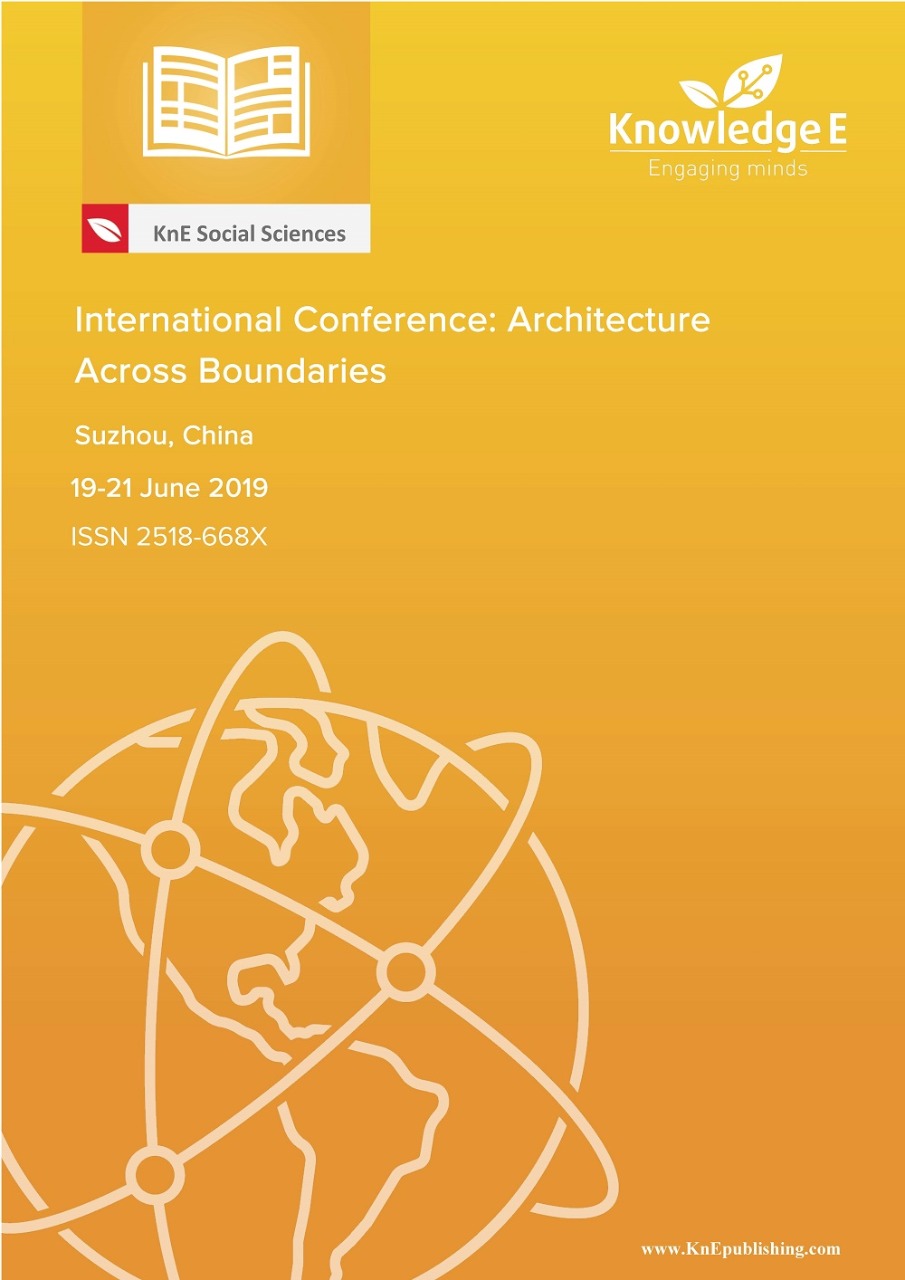Contemporary Contextualization: Using Cross-Cultural Practice in Sensitive Contexts
DOI:
https://doi.org/10.18502/kss.v3i27.5516Abstract
As a physical manifestation of political, social, and economic forces, architecture has been affected by globalization in the same ways as other fields. It has succumbed to thecriticismofthehomogenizationofitsproduct,andarchitectscontinuetosearchfor relevance in this new global context. However, as globalization matures in the twentyfirstcentury,sodoestheunderstandingoftheneedforculturalidentity.Asnewcomplex contexts arise, they require a sensitive understanding of the forces in play, in order to continue to create humanistic interventions in the built environment. While some may consider global practice a threat to local environments, given today’s complex conditions, the lines between local and global begin to blur together. Thus, it can be arguedthattrans-nationalpracticeenhancestheabilitytorespondsensitivelytointricate political, social, and urban contexts which are now more common than ever. Two Sino-French case studies are used here to demonstrate this phenomenon; one in China and one in France. Together they show how these forces manifest themselves throughthecross-culturalexchangethatisneededforfuturepractice.Astheprofession moves forward, one can consider that this international sensitivity will be increasingly employed to successfully engage and respond to complex local environments.
References
Jacobs, Jane. (1961). The Death and Life of Great American Cities. New York, NY: Random House.
Frampton, Kenneth. (1981). Towards a Critical Regionalism: Six points for an architecture of resistance. Anti-Aesthetic. Essays on Postmodern Culture. Ed. Hal Foster. Seattle, WA: Bay Press.
AA School of Architecture. (2017, January 18). Renier De Graaf – The Complex Nature of a Simple Profession. [Video file]. Retrieved from https://www.youtube.com/watch?v =dASloS-JVYQ
Levitt, Theodor. (1983, May - June). Harvard Business Review.
Nicolai, Bernd. (2017, November 03). Architectural History After Globalization. E-flux Architecture. Retrieved from https://www.e-flux.com/architecture/history-theory/15923 8/architectural-history-afterglobalization/
Giddens, Anthony. (1991). The Consequences of Modernity. Cambridge, UK: Polity Press
Adam, Robert. (2008). Globalisation and Architecture. The Architectural Review, vol. 223, 1332, pp. 74-77.
Harvard GSD. (2018, April 2). Reinier de Graaf, “Phantom Urbanism.” [Video file]. Retrieved from https: //www.youtube.com/watch?v=cLaY1to93Lw
Adam, Robert. Ibid.
Nicolai, Bernd. Ibid.

